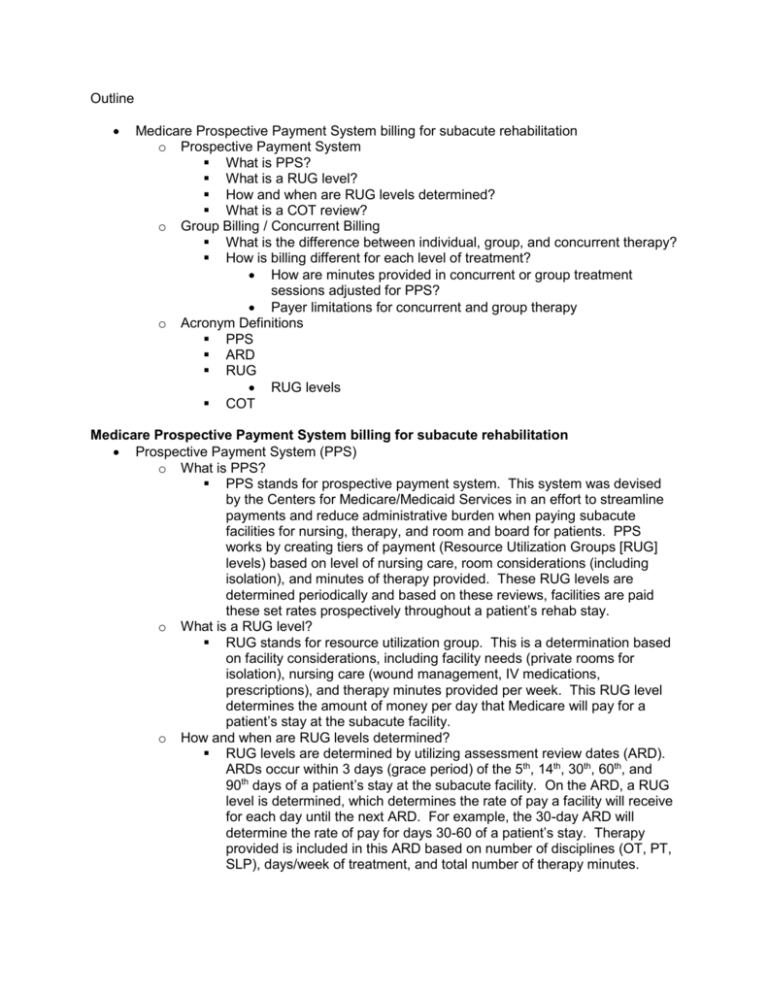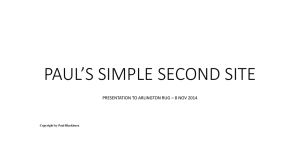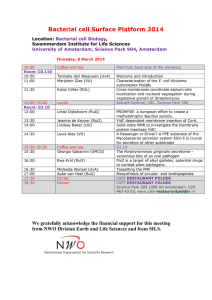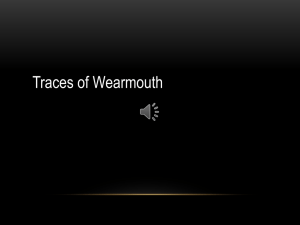Outline Medicare Prospective Payment System billing for subacute
advertisement

Outline Medicare Prospective Payment System billing for subacute rehabilitation o Prospective Payment System What is PPS? What is a RUG level? How and when are RUG levels determined? What is a COT review? o Group Billing / Concurrent Billing What is the difference between individual, group, and concurrent therapy? How is billing different for each level of treatment? How are minutes provided in concurrent or group treatment sessions adjusted for PPS? Payer limitations for concurrent and group therapy o Acronym Definitions PPS ARD RUG RUG levels COT Medicare Prospective Payment System billing for subacute rehabilitation Prospective Payment System (PPS) o What is PPS? PPS stands for prospective payment system. This system was devised by the Centers for Medicare/Medicaid Services in an effort to streamline payments and reduce administrative burden when paying subacute facilities for nursing, therapy, and room and board for patients. PPS works by creating tiers of payment (Resource Utilization Groups [RUG] levels) based on level of nursing care, room considerations (including isolation), and minutes of therapy provided. These RUG levels are determined periodically and based on these reviews, facilities are paid these set rates prospectively throughout a patient’s rehab stay. o What is a RUG level? RUG stands for resource utilization group. This is a determination based on facility considerations, including facility needs (private rooms for isolation), nursing care (wound management, IV medications, prescriptions), and therapy minutes provided per week. This RUG level determines the amount of money per day that Medicare will pay for a patient’s stay at the subacute facility. o How and when are RUG levels determined? RUG levels are determined by utilizing assessment review dates (ARD). ARDs occur within 3 days (grace period) of the 5th, 14th, 30th, 60th, and 90th days of a patient’s stay at the subacute facility. On the ARD, a RUG level is determined, which determines the rate of pay a facility will receive for each day until the next ARD. For example, the 30-day ARD will determine the rate of pay for days 30-60 of a patient’s stay. Therapy provided is included in this ARD based on number of disciplines (OT, PT, SLP), days/week of treatment, and total number of therapy minutes. o Medicare has defined five (5) levels for RUGs: Ultra-high, Very-high, High, Medium, and Low. Ultra-high – at least 720 minutes provided in the past seven (7) days with at least two (2) disciplines. Pt must be seen at least five (5) days in the past week by one of the disciplines and at least three (3) days by the second discipline Very-high – at least 500 minutes provided in the past seven (7) days delivered by at least one discipline, and must include at least five (5) days of treatment by at least one discipline High – at least 325 minutes provided in the past seven (7) days delivered by at least one discipline, and must include at least five (5) days of treatment by at least one discipline Medium – at least 150 minutes provided in the past seven (7) days with a total of five days of treatment provided by any combination of disciplines Low – at least 45 minutes of therapy across three days of treatment What is a COT review? In October, 2011, in an effort to reduce fraud in the subacute prospective payment system, CMS instituted change of therapy (COT) weekly reviews to ensure accurate billing and payments. Every seven (7) days of the patient’s stay, therapy minutes provided are reviewed for determination of RUG level and to ensure accurate billing. If a patient does not receive the appropriated number of minutes, the facility must complete a Change of Therapy, which will affect the reimbursement rate that CMS will pay for the preceding seven (7) days. Change of therapy can increase or decrease a RUG level, which also allows greater flexibility and tailoring of therapy interventions to cater to each patient’s therapeutic tolerance and medical condition. Group / Concurrent Billing o What is the difference between individual, group, and concurrent therapy? Subacute rehabilitation distinguishes the therapy provided based on the ratio of therapists to patients. Individual treatment is provided 1:1 with one therapist to one patient with undivided attention. Concurrent therapy is one therapist treating two (2) patients, but patients are performing separate treatments that are unrelated (e.g., one patient performing UE exercises, the other working on a money management task). A single therapist’s attention is divided between two (2) patients. Group treatment is defined as two (2) to four (4) patients (Medicare states that four (4) is the optimal number) performing the same activity (e.g., cooking or exercise groups). In subacute rehab, group therapy minutes are only allowed to account for a maximum of 25% of a patient’s therapy per week. o How is billing different for each level of treatment? In determining billing for concurrent and group billing, there are two issues: 1) minutes are adjusted when calculating RUG levels based on concurrent or group minutes, and 2) primary payer may limit types of therapy allowed 1) Therapy minutes, in calculating RUG levels for PPS, are adjusted when provided in either concurrent or group settings. Concurrent therapy, because one therapist is provided treatment to two (2) patients, is divided in half when determining therapy minutes for PPS. Similarly, because CMS has determined that an optimal group contains four (4) patients, group minutes are divided by four when calculating therapy minutes for PPS. Therefore, two patients seen concurrently for 60 minutes will register as 30 minutes of treatment when calculating RUG levels. The same two (or three, or four) patients, when seen in a group will register 15 minutes of treatment for the same hour-long group. 2) The patient’s therapy payer (Medicare Part A, Medicare Part B, or private insurance) will determine mode of therapy allowed. Medicare Part A (or Medicare replacement plan) is the only therapy payer that is determined by RUG levels, and therefore the only payer affected by group and concurrent minute adjustments. Medicare Part B patients are not affected by group minute adjustments, but Part B pays by fee-forservice, and the reimbursement for CPT code 97150 (group therapy) is very low, and limits the money earned by the rehabilitation department. While Medicare Part B allows unadjusted group treatment, concurrent treatment is not covered and not allowed during treatment sessions. Acronym Definitions o PPS – Prospective Payment System – system instituted by Centers for Medicare/Medicaid Services (CMS) to predict daily pay rate for patient’s stay based on resource utilization group (RUG) level at the time of each assessment review date (ARD). The prospective system has helped streamline reimbursement and reduce administrative costs for CMS. o ARD – Assessment Review Date – pre-determined dates (within 3 grace days) at which time review is completed across therapy, nursing, and facility needs to determine rate of pay for patient’s stay. ARDs occur at days 5, 14, 30, 60, and 90 o RUG – Resource Utilization Group – level of care based on assessments of nursing needs (e.g., wound care, IV antibiotics, etc.), therapy provided, and facility needs (e.g., private room for isolation), which will determine rate of reimbursement by CMS o COT – Change of Therapy – weekly review dates to ensure accuracy of level of care for each patient. If a patient does not receive the appropriated number of minutes based on RUG level, the facility must complete a Change of Therapy assessment, which will affect the reimbursement rate that CMS will pay for the preceding seven (7) days




